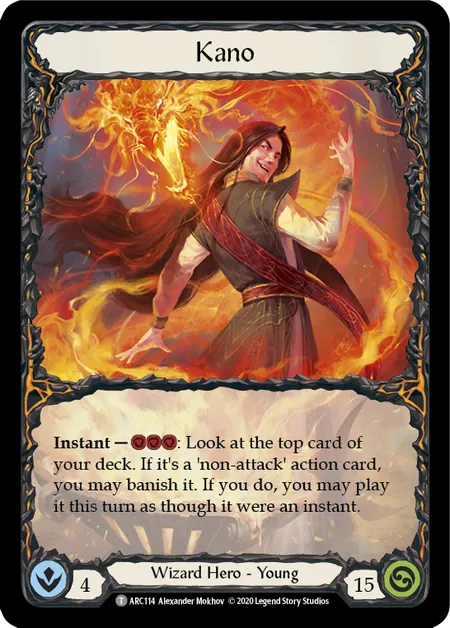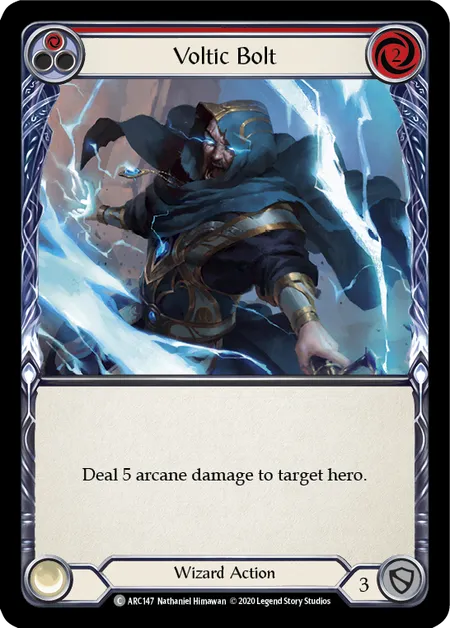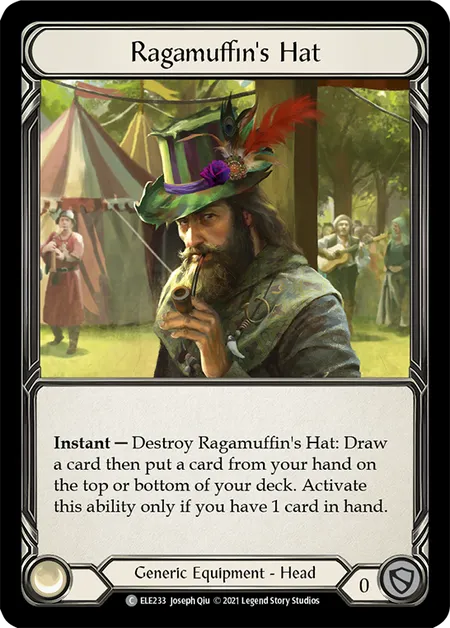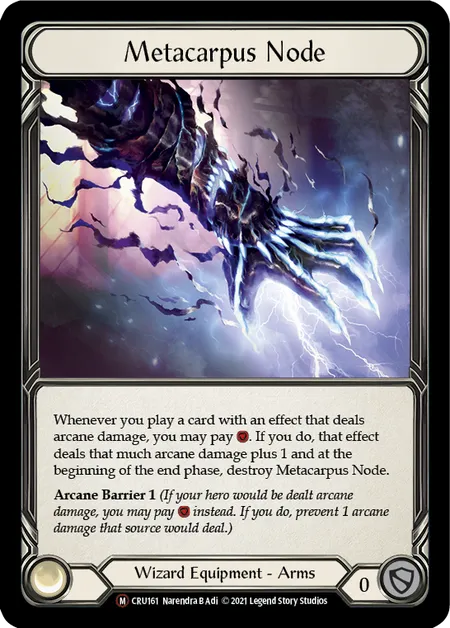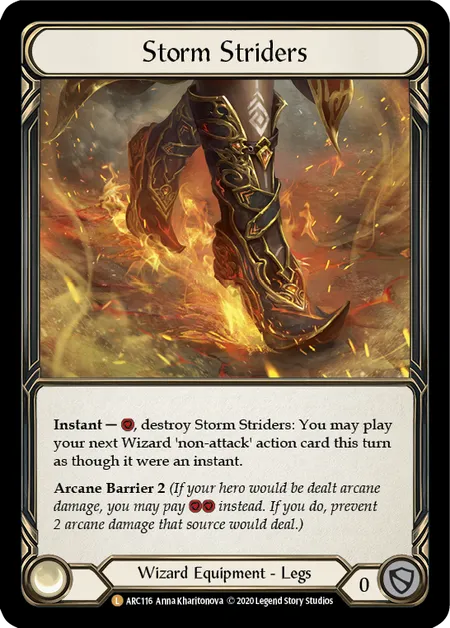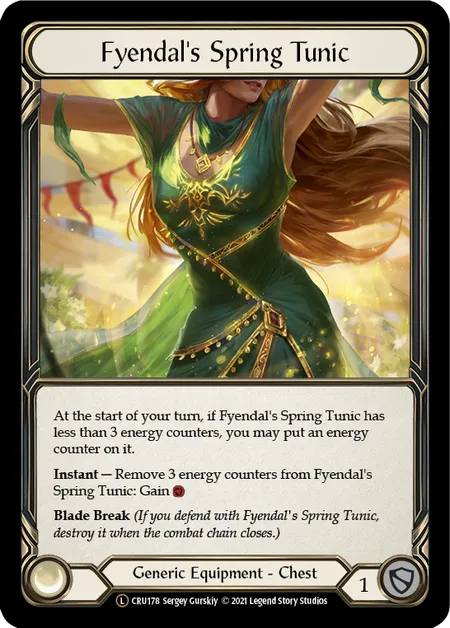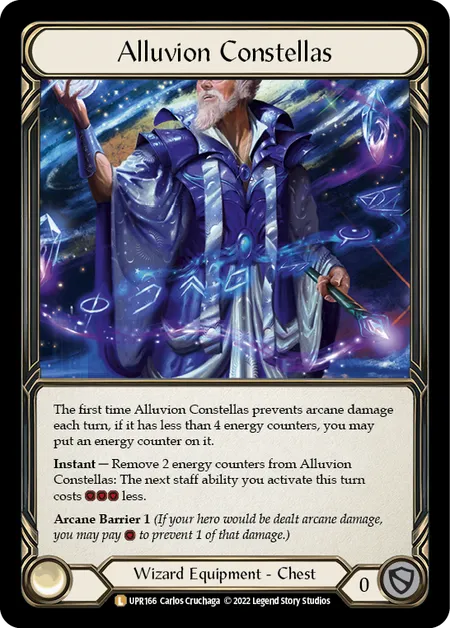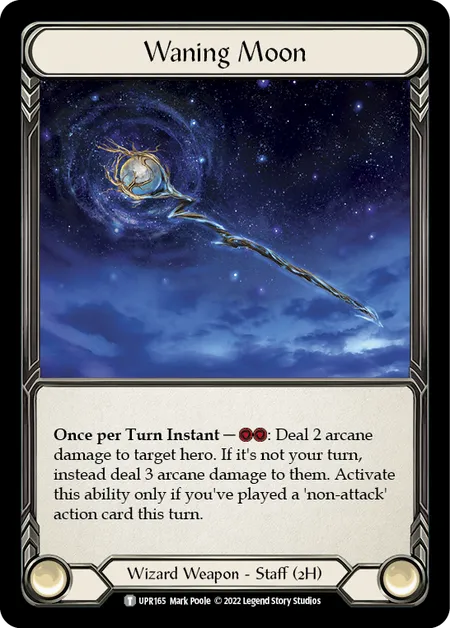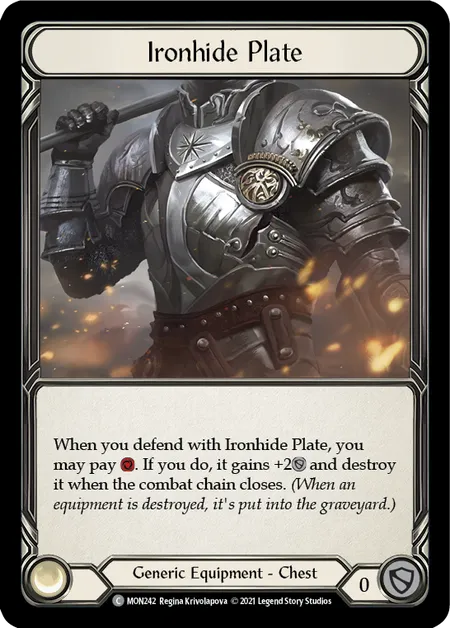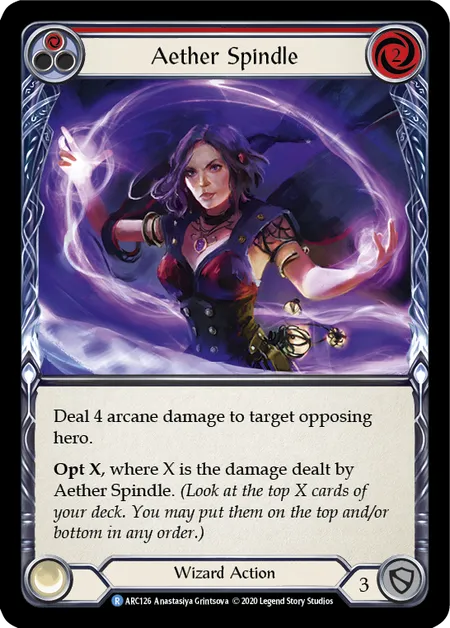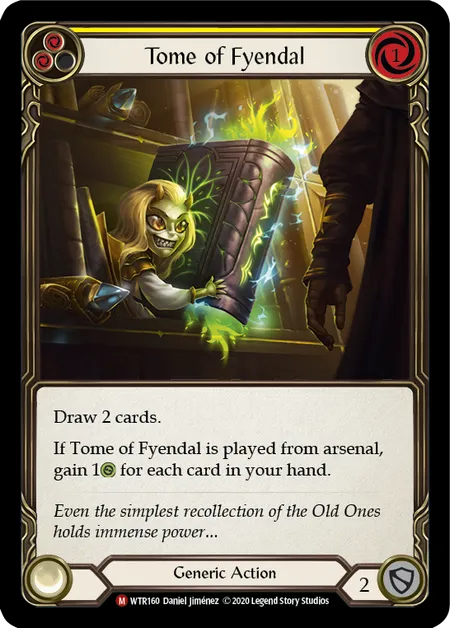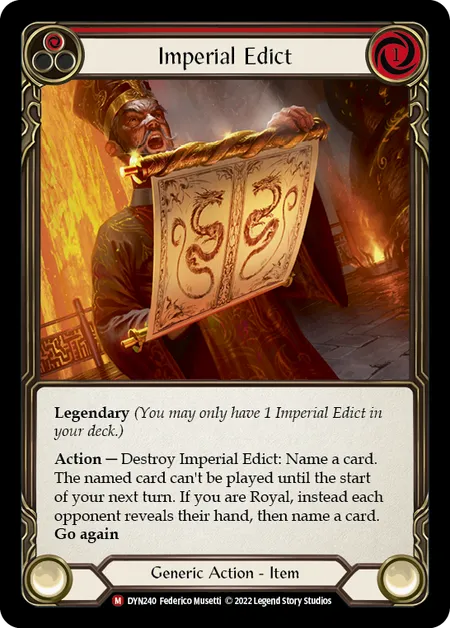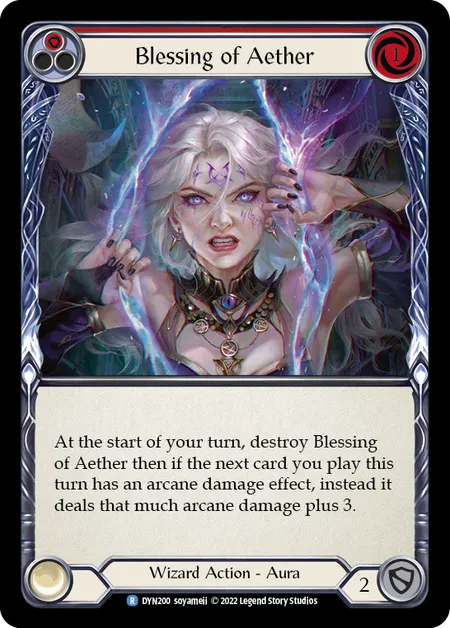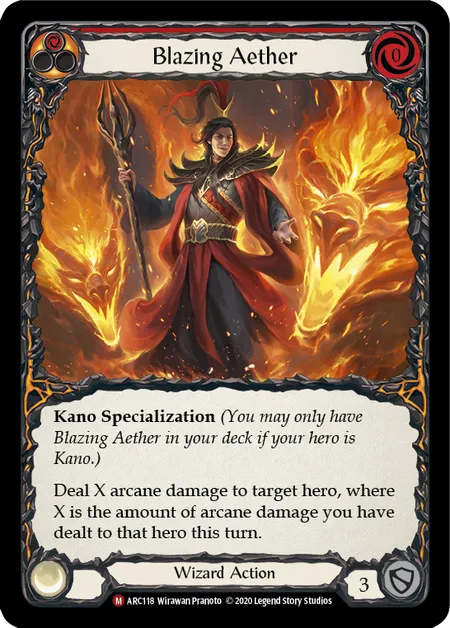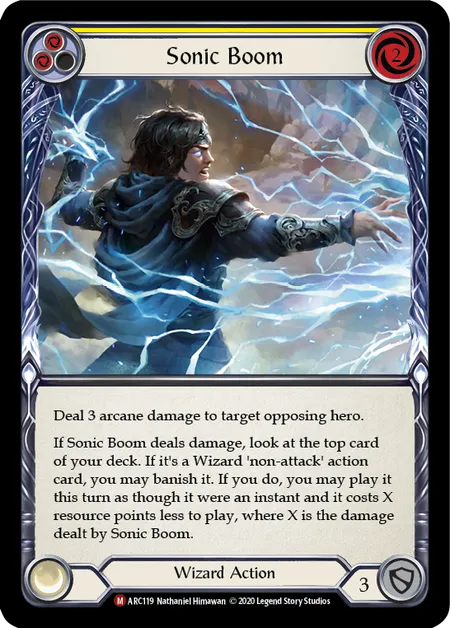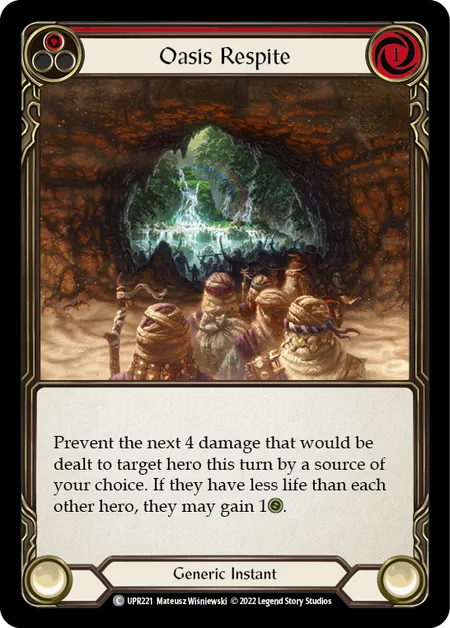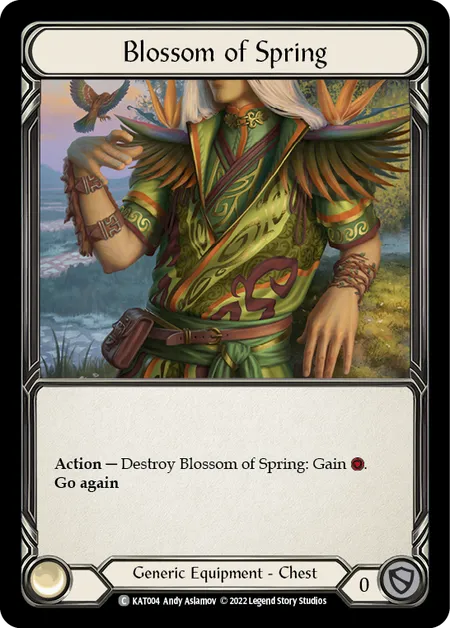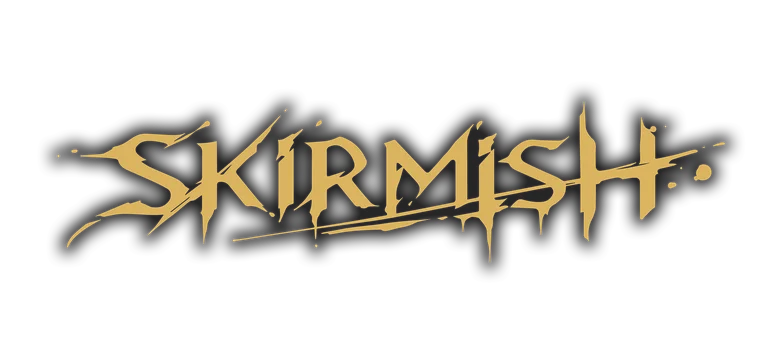Kieran Carnegie is a renowned Wizard player, who arcane blasted his way to the Top 8 of New Zealand Nationals 2021 and Calling: Auckland 2021, as well as winning several Battle Hardeneds, Road to Nationals, and Skirmishes. He has a reputation for pulling off insanely difficult technical plays, and above all else, loves pushing the big shiny ‘Kano button’.
The Dracai of Aether plays Flesh and Blood like no other hero. Martial heroes of Rathe are bound to pesky constraints like attacking during their own turn, but Kano proves that sometimes the best defense is overwhelming magical firepower.
I have been playing Kano in Blitz since the format was released, and to this day I am still finding new ways to build and enjoy the deck. I love Kano’s complex gameplay, the incredible power of the Wizard class, and the ability to snatch victory from the jaws of defeat.
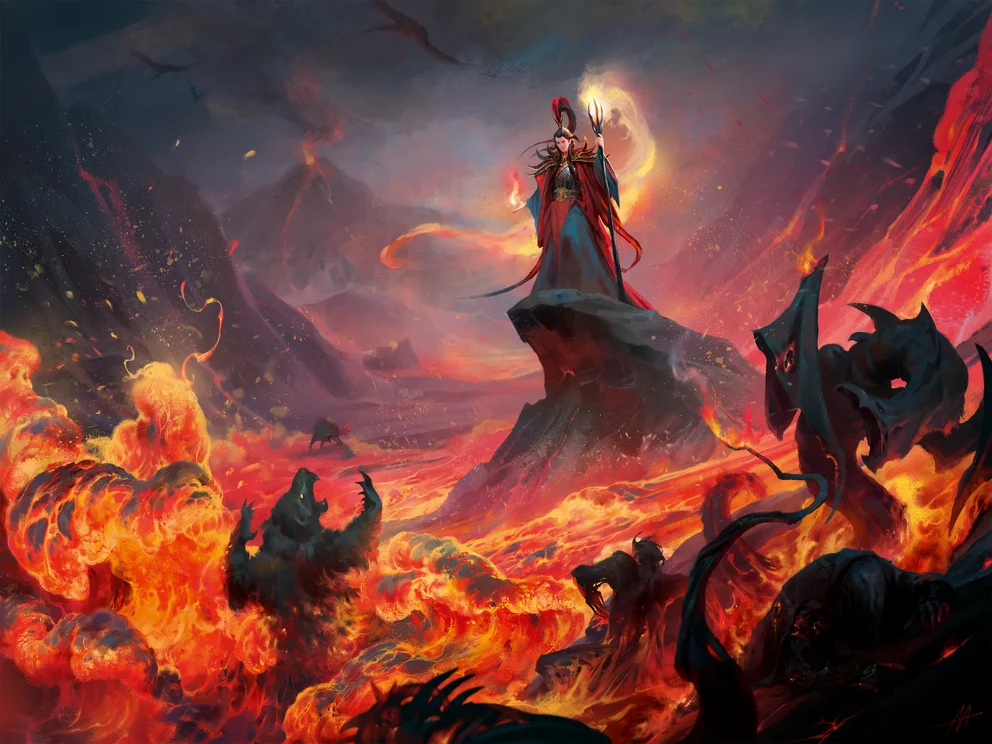
Kano 101: An introduction to Blitz Wizardry
As a wizard, Kano primarily deals arcane damage instead of physical damage like most heroes. Arcane damage cannot be prevented through regular means: instead your opponent needs to invest in equipment with Arcane Barrier, or utilise prevention effects like Oasis Respite.
Kano’s hero ability allows you to look at the top card of your deck for 3 resources, and then, if it is a non-attack action, you may play it this turn at instant speed. This gives the deck incredible freedom - you are able to disregard traditional action economy to play cards at the best possible time. Examples of strong timings include just before your opponent threatens lethal damage, before a Crippling Crush forces you to discard, or just before your opponent gains life from Sigil of Solace.
Kano’s game plan is fundamentally straightforward, despite its seeming complexity: Create a game state where you can achieve a combo kill, and then win the game with a devastating combo.
Achieving this goal involves a few considerations:
- How do I stay alive long enough to deliver the combo?
- How can I ensure my opponent doesn’t interrupt or prevent the combo?
- How can I make the combo threaten lethal?
Every decision in Kano works towards these three aims. Survive, set up, succeed.
Building Kano
In Blitz most Kano decks will run a very standard equipment suite.
Ragamuffin’s Hat is surprisingly strong and flexible. It serves to fix hands, filter through cards, or act in a similar way to Storm Striders. It is also one of the hardest cards in the game to use optimally and takes time and practice to master using.
Spellfire Cloak is a common chest piece that can gain a resource during your opponent's turn, without having to wait multiple turns like with Fyendal’s Spring Tunic. A single resource can make or break the game during a combo turn.
Metacarpus Nodes allow you to pay a resource each time you play a burn spell to pump the damage dealt by 1, before being destroyed at the end of the turn. Combined with damage doubling effects and the ability to play multiple cards per turn, this majestic arm piece can often contribute 5+ damage to a lethal combo!
The Legendary Storm Striders are the core of Kano’s game plan, allowing you to play one Wizard non-attack action at instant speed. The common Mage Master Boots can be used if you do not own Storm Striders, however the deck will not feel or play the same.
For some matchups, you may want to try some alternative equipment.
Fyendal’s Spring Tunic can be used for the 1 defense and resource generation over a long game (e.g. against Guardian). Alluvion Constellas brings you up to Arcane Barrier 4 against other Wizards, while also allowing you to bank counters to save resources with Waning Moon! Speaking of, Waning Moon is a powerful weapon to push damage when your opponent is running high Arcane Barrier, or does not care about on-damage effects and Kano’s timing windows. It is currently mostly used for the mirror match. Lastly, various pieces of Ironhide can be used against Prism or Benji to avoid scary on-hits.
Choosing which cards to run in the main deck is all about fulfilling the aims of the deck (survive, set up, succeed) with cards that are as flexible as possible. The questions you should be asking are:
- “Am I happy to play this in my turn as an action?”
- “Does this contribute towards a combo during my opponent’s turn?”
- “If I activate Kano’s ability and see this card on top of the deck, is it usable?”
These are the kinds of cards I look for in Kano:
- Reds and yellows with powerful ‘on-damage’ effects - these force opponents to mitigate them or suffer escalating consequences. For example, the effect of Aether Spindle can either sculpt my next hand or dig through my deck to find a follow up card.
- Non-attack actions that deal high arcane damage - arcane damage is difficult to fully prevent, so cards like Swell Tidings or Emeritus Scolding almost always force damage through.
- Cards that draw other cards - you can always pitch cards drawn to pay for Kano’s ability, so every card drawn is essentially another chance to play something powerful off the top of the deck. These effects are especially potent with Waning Moon, giving you free damage.
- Useful blues - I want to either pitch these to pay for Kano’s ability, or happily play them out on either turn. Examples are Energy Potion, Potion of Déjà Vu, and the Wizard powerhouse Gaze the Ages. Warmonger’s Diplomacy is another strong consideration, as it disrupts many of our worst matchups.
- Cards that gain life - things like Fyendal’s Fighting Spirit or Tome of Fyendal. Kano starts with only 15 life, and Blitz heroes can deal incredible amounts of damage very quickly, so life gain can keep you in the game long enough to get your combo off.
A typical Kano list will probably run 12-13 reds, 7-8 yellows, and roughly 20 blues. Ideally, every hand should have one red card, and three yellow or blue cards. If you draw a hand with no reds, it can be difficult to put pressure on your opponent, but drawing too many reds makes it hard to pay for any combos when you really need to.
Skirmish Season 7 Rules
With the modified deck construction rules for Skirmish Season 7 that allow for main deck cards to be sided in and out of your inventory, Kano has some flexibility with bringing cards to improve specific matchups. You can afford to bring more toolbox cards than most other heroes, as the deck does not need a full suite of Nullrune equipment.
Some cards to consider are:
- 6+ power attack actions to destroy phantasm attacks
- Scour to destroy important auras like spectra and Soul Shackles
- Imperial Edict to deny your opponent’s use of Oasis Respite
- Cindering Foresight in matchups where you’re running Waning Moon
- Additional blues for the mirror match
- Blessing of Aether for slower matchups
Playing Kano
Because Kano starts with only 15 life, it’s important to avoid unstoppable damage like dominate or intimidate in the first turn. Against matchups like these, you want to go first to deny them the ability to hurt you right off the bat. In all other matchups, you want to go second, playing for tempo.
A key design element in Flesh and Blood is that heroes draw up to their intellect at the end of their turn: cards used to defend in your opponent’s turn are not refreshed for your own turn, so every card used for defense weakens your turn’s offensive capability.
When playing as Kano, this design becomes quite nasty: you can deal damage in your turn, draw your next hand, and then deal damage in your opponent’s turn, before they have drawn any new cards! Chaining turns together like this allows Kano to output ludicrous damage, especially as many decks will likely not have two sources of prevention in a single hand.
This creates a dangerous conundrum for your opponent: if they play aggressively and spend their remaining cards, they might eat damage at instant speed in response. However, if they play defensively - such as passing when low on cards in hand, or always keeping extra pitch to prevent damage - then their turns are weak. If the opponent’s turn is weak, you can hold on to more cards for your next turn.
This effect is known as false tempo: Kano’s combos and instant speed plays are so dangerous, they force opponents to play it safe. In doing so, their turns become weaker, essentially giving the Kano player tempo.
False tempo is key to mastering Kano, and creates some of Flesh and Blood’s most interesting mind-games: when is it safe for your opponent to spend that additional pitch on Pummel or Flying Kick, and when will those 2 resources be the difference between life and death?
When do I combo?
Working out when to play cards and when to block can be a little overwhelming. Here’s my approach to any given turn:
- Step 1: Identify if I can survive their turn. If my opponent is resolving a huge turn the answer is normally no. If they’ve pitched reds, the answer is probably yes. If you can’t survive: combo time.
- Step 2: Identify if there is any possibility the game-state will be better for me in any upcoming turns. Is there a pitch stack coming up? Can I attack their hand? Do I have access to life gain? If the game state will not improve: combo time.
- Step 3: Identify if my opponent might over-commit this turn and put themselves in a dangerous position. If it seems likely: combo time.
- Step 4: Can I set up for a combo in the next turn by attacking their hand during my turn, or can I force false tempo by scaring them? If I think I can get away with this, block minimally and aim to do as much damage as possible.
- Step 5: Okay, I have to play the game like a normal hero. Block with whichever cards I need to, and we’ll hope for the best next turn!
Anyone who has played against a Kano can recognize the long periods of thinking needed when deciding to go for a combo or wait another turn. Practice makes perfect!
How do I combo?
Kano’s combos can appear extremely complicated, but they’re actually shockingly simple. Broadly, Kano’s combos all currently take one of the following forms:
- Start with a pumped Aether Flare, followed by any other burn spell.
- Use any combination of burn spells followed by a Blazing Aether.
- Dump as many damage pumps as possible into a Forked Lightning.
- Overwhelm the opponent with high-damage burn spells that go over the top of Arcane Barrier, like Sonic Boom and Emeritus Scolding.
You can also activate Kano’s ability without knowing exactly what is on the top of the deck (a so-called ‘Blind Kano’) and hope the top card is one you need. Late game, if you have memorised the order of your pitch, then you can pull combos off the top of the deck au naturale.
Be willing to gamble
It is easy to get trapped in a situation where you are blocking, waiting for the perfect combo turn, and it never comes. Especially against decks that can output a lot of pressure, it can be worth taking a moment and thinking about whether the game will ever get any better for you.
In addition to powerful blind topdecks, there is a wide variety of situations where gambling for the win can be correct: maybe your opponent only has reds in hand and can’t defend effectively, or maybe they pitched an Oasis Respite earlier that if redrawn, will prevent your combo, or maybe you are low on life and can’t afford to play around attack reactions.
In these cases, if you get lucky you can win, and if you don’t get lucky, there is no harm in trying if the alternative was to lose slowly. These gambling plays are the scourge of many an opponent: one or two strong cards on top of deck at just the right moment, and Kano can turn what seems like a guaranteed loss into a spectacular win.
Beating Kano
Playing against Kano can be complex and challenging, as the deck forces you to run unique equipment and cards that can detract from your game plan. Here are some easy tips to make your local Kano players sad.
- Run more blues! Many aggressive decks, like Chane or Ira, want to draw a single blue per turn, and so might only run 8-12. By increasing this number slightly you have a little more room for preventing arcane damage without losing too much power. Think about cards that are still powerful despite their blue pitch, like Shrill of Skullform.
- Swap your defense reactions for damage prevention. Oasis Respite defends against everything: arcane damage, Rosetta Thorn, and even Command and Conquer! Brush Off is also a nice common that can soak up arcane damage in a pinch while still defending normal attacks. The special rules for Skirmish Season 7 allow you to swap these in and out when you see fit, so there’s no reason not to run them!
- Don’t sleep on Spellvoid. If you don’t need your equipment, and you can’t reliably pay for Arcane Barrier, run Spellvoid in that slot. While one point of prevention might not sound like much, using it to prevent a critical trigger from Lesson in Lava or damage flooding from Aether Flare can often mean these unassuming equipment pieces are worth 4 or more life in a critical turn. The new Radiant and Darkness equipment released in Dusk till Dawn are even more powerful options for Light and Shadow heroes.
- Prepare for a fast game. While it can be very tempting to play with Legendaries, sometimes an expendable common plays better in fast games. Resource-generating equipment like Vest of the First Fist and Blossom of Spring allow you to threaten lethal against a Kano player a whole turn earlier than something like Fyendal’s Spring Tunic, making it much less likely they can kill you in response.
Since so much of Kano’s damage comes from arcane snowballing or searching/drawing effects, sometimes saving your pitch to stop a later , more threatening card can be very effective. When Kano goes for a combo, work out what they are trying to do and how they can possibly achieve lethal. Don’t blindly prevent the first instance of damage if a more important source is likely to follow.
One mistake that many players make is playing too scared. It might sound counterintuitive to be ‘too scared’ of a combo deck, but the longer a game goes, the more likely it is that Kano will draw or assemble a combo. Sometimes, your best bet is to try to win quickly, and take them out before they can reach the necessary pieces to blow you out of the water.
Winning quicker means instead of running a 4th Nullrune, you might run an aggressive equipment like Snapdragon Scalers. Cards that force Kano to act with imperfect knowledge of your hand and strategy are also perfect. When a Brute resolves Barraging Beatdown, or a Ninja begins their turn with Enlightened Strike (choosing to draw a card), threatening either Razor Reflex or Snapdragon Scalers, they force the Kano player to commit to a course of action with imperfect information, maximising the chance they make a mistake.
After all, it is very hard to cast spells while being punched in the mouth.
